Junkyard Gem: Nissan Tsuru

Did you like the 1992 Nissan Sentra? If so, you will be very happy to know that Nissan built ’92 Sentras, with very few changes, all the way through 2017 in Mexico. This was the Tsuru, which underwent some cosmetic and powertrain changes over the years but essentially remained a stripped-down ’92 Sentra for its entire production run (which made it cheap but also means it was a very bad idea to crash one). The Tsuru wasn’t sold outside of Mexico in the New World (though there was a version for Africa and the Middle East), but it’s a mere 10-hour drive from the Mexican border to Colorado Springs, Colorado … which is where I found today’s Junkyard Gem.
All identifying badges and build tags were scraped off this car long before it got here, and it’s apparent that it was assembled using components from many different cars. The self-service wrecking yard where it now resides has it listed as a 1998 Nissan Sentra, which is close enough.
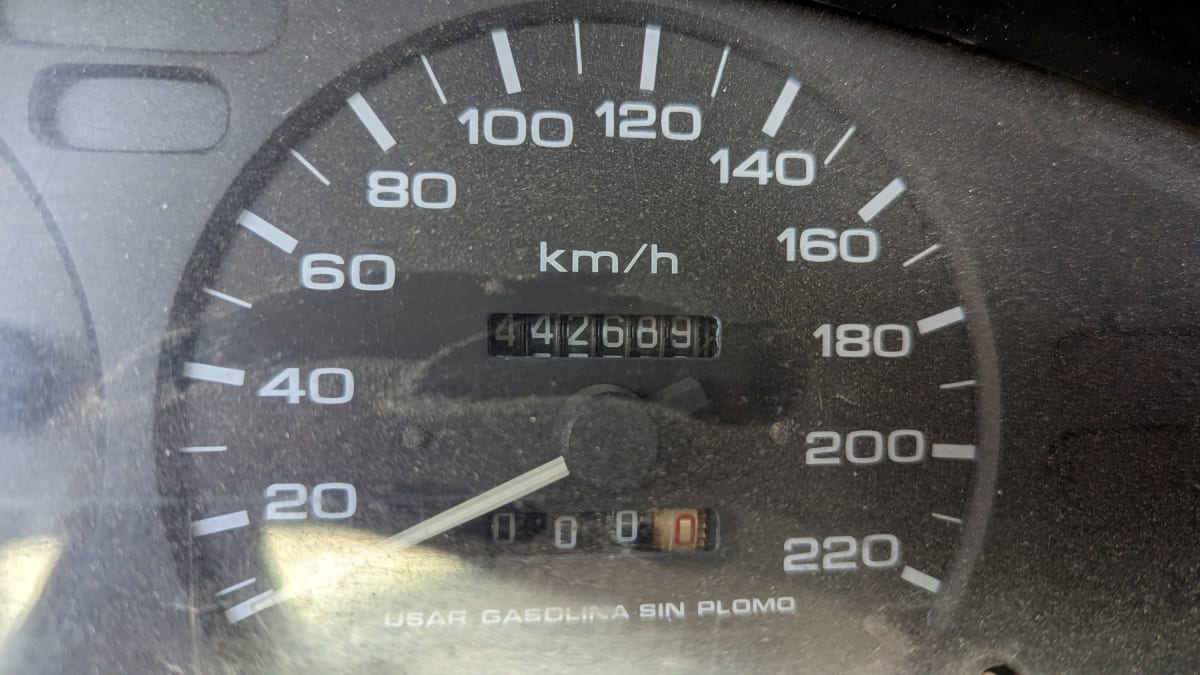
I’m always looking for high-mile cars during my junkyard travels (so far, the biggest odometer figure I’ve seen was on a 1990 Volvo 244) and I thought at first glance that I had found a 442,689-mile Sentra. Then I noticed the way-too-high top speed and the USAR GASOLINA SIN PLOMO (use unleaded gasoline only) warning and I knew that I’d found a Mexican-market car.
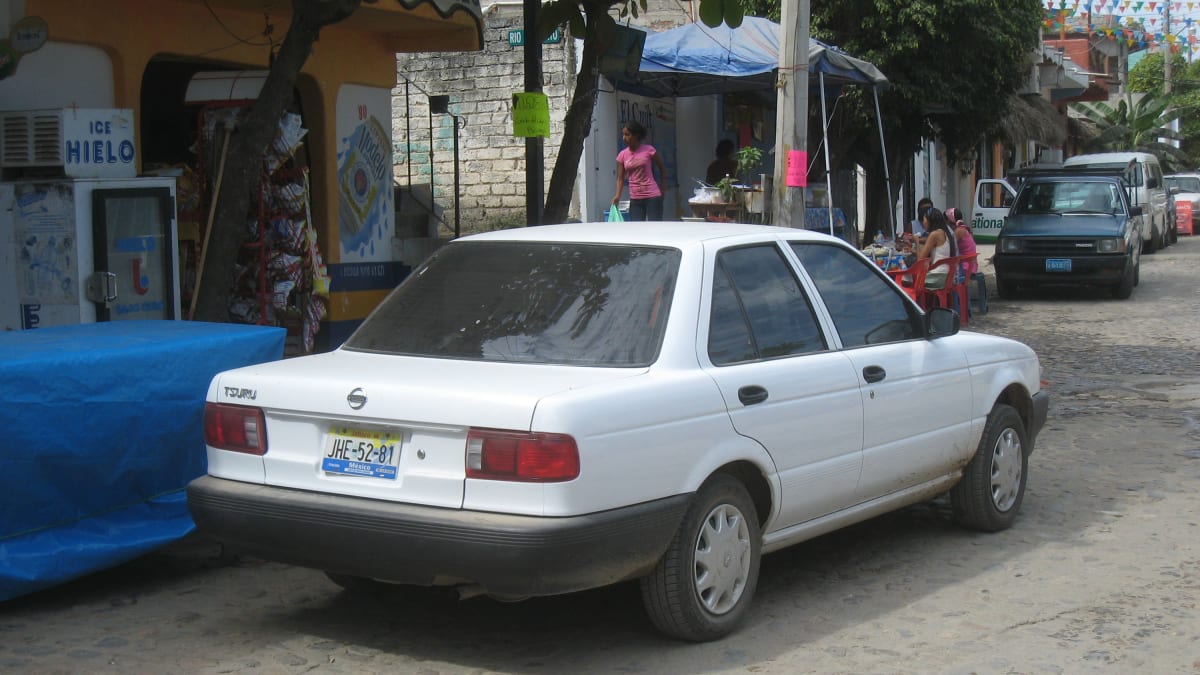
Tsurus are everywhere in Mexico, having replaced the air-cooled Volkswagen Beetle as the country’s everyman car (and taxi) of choice after the 1930s-technology Vocho went out of production in 2003.
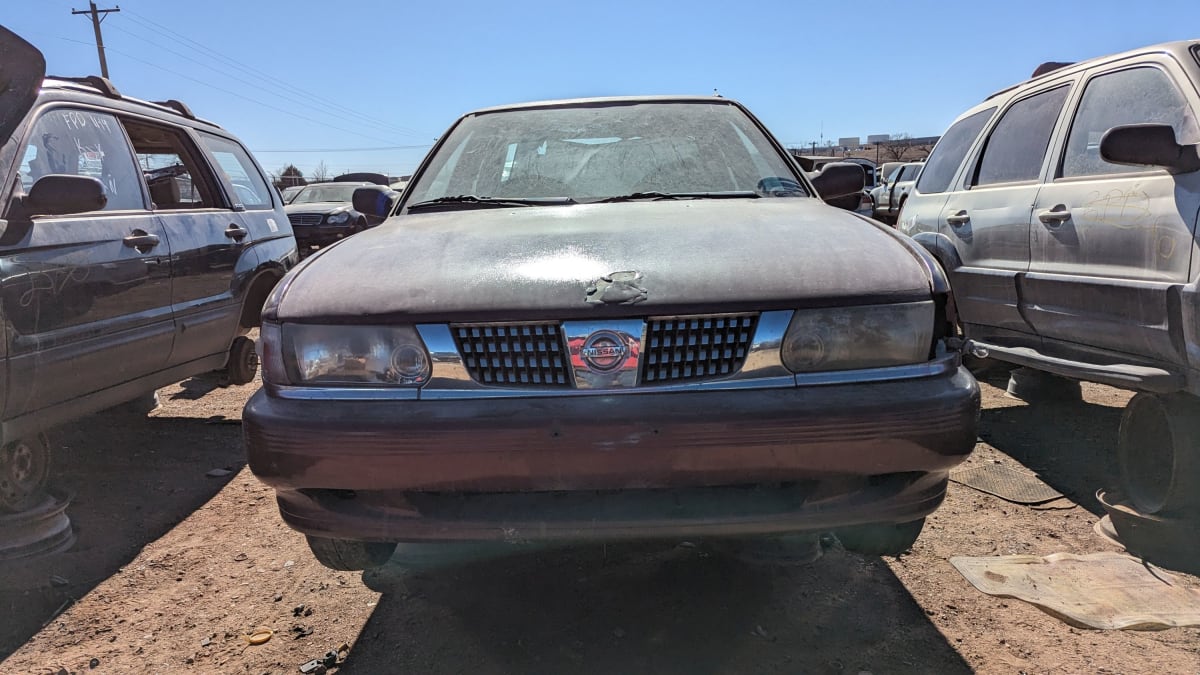
What year is this car? That’s a good question! I found a VIN tag on the dash that showed a 1998 model year, so that’s a starting point. However, the grille comes from a much later Tsuru, maybe middle 2010s.
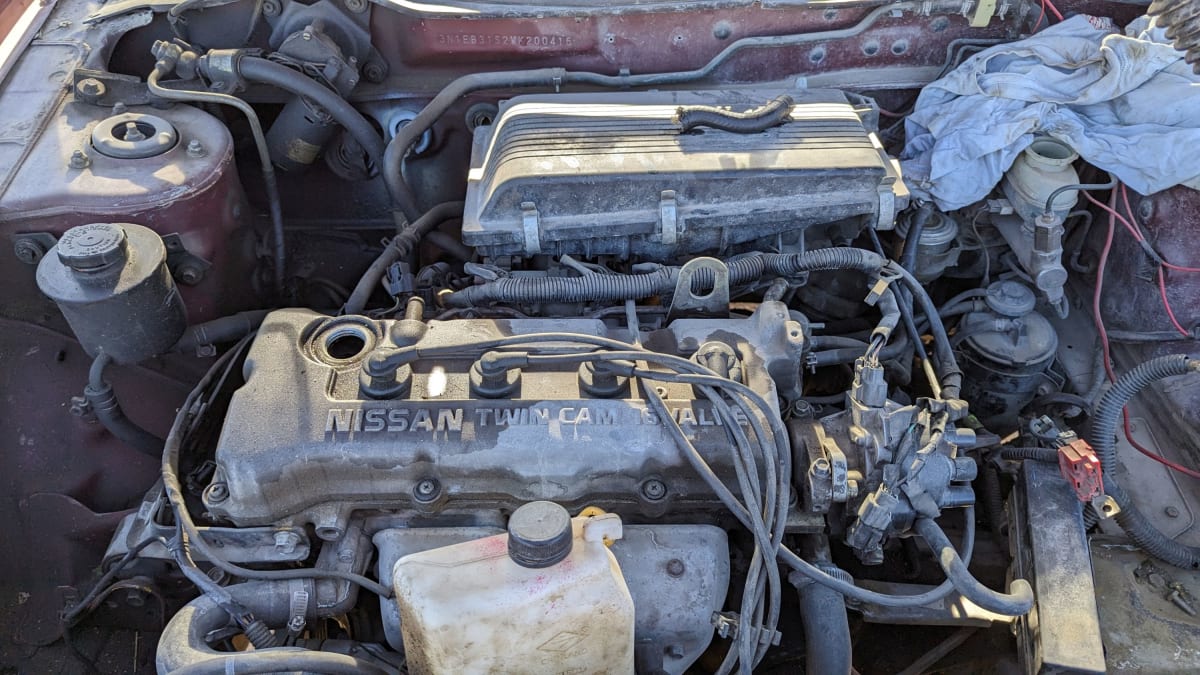
Then there’s the engine, which is the SOHC unit that went in the later Tsurus.
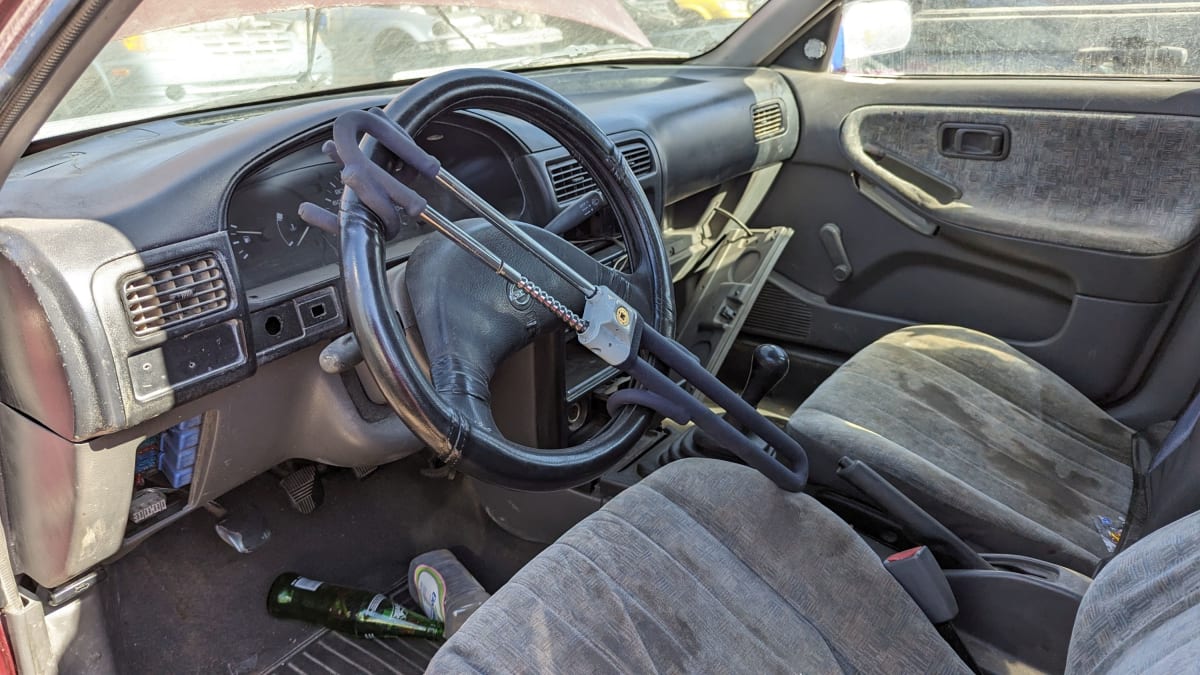
The dash assembly has been pasted together from at least three, and maybe more, cars. This makes me think that the VIN is the one from whatever random Juarez cab donated the upper dash components. The entire car seems to be the Tsuru version of the famous Johnny Cash song. Could be a ’92, could be a ’17, probably a bit of every year in between. The steering-wheel lock suggests that it got towed away for having expired Mexican plates, borrowed Colorado plates, or no plates at all.
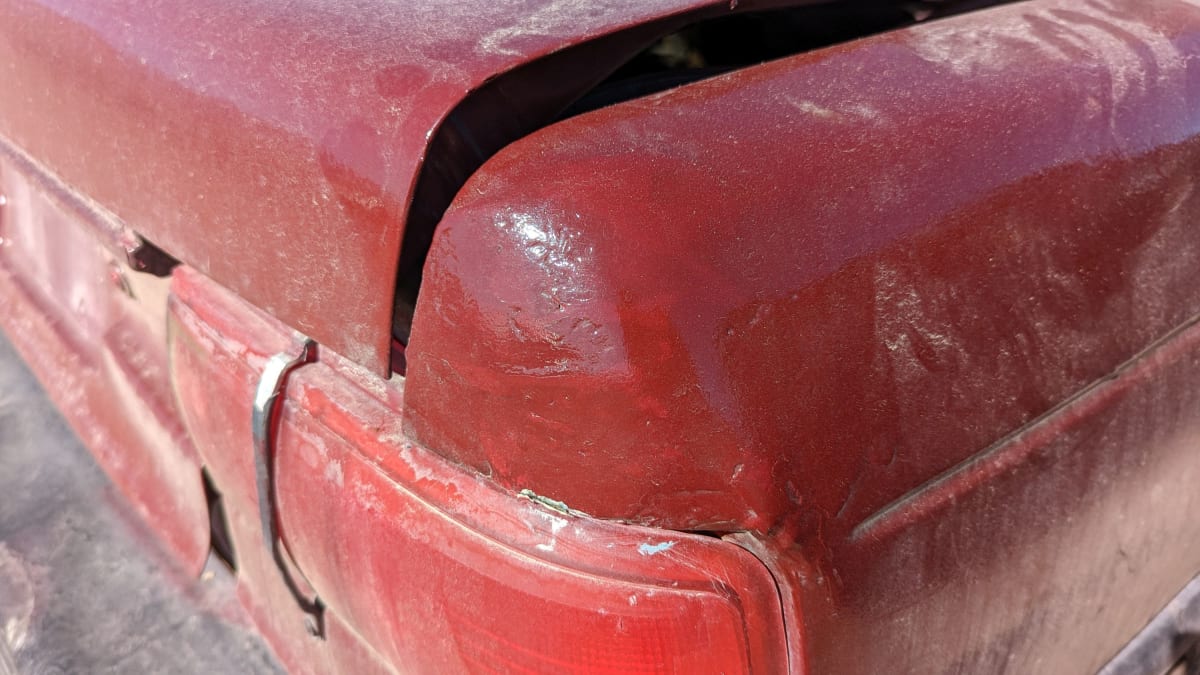
Every centimeter of the body has been hit, straightened, bulked up with body filler, painted, then hit again.
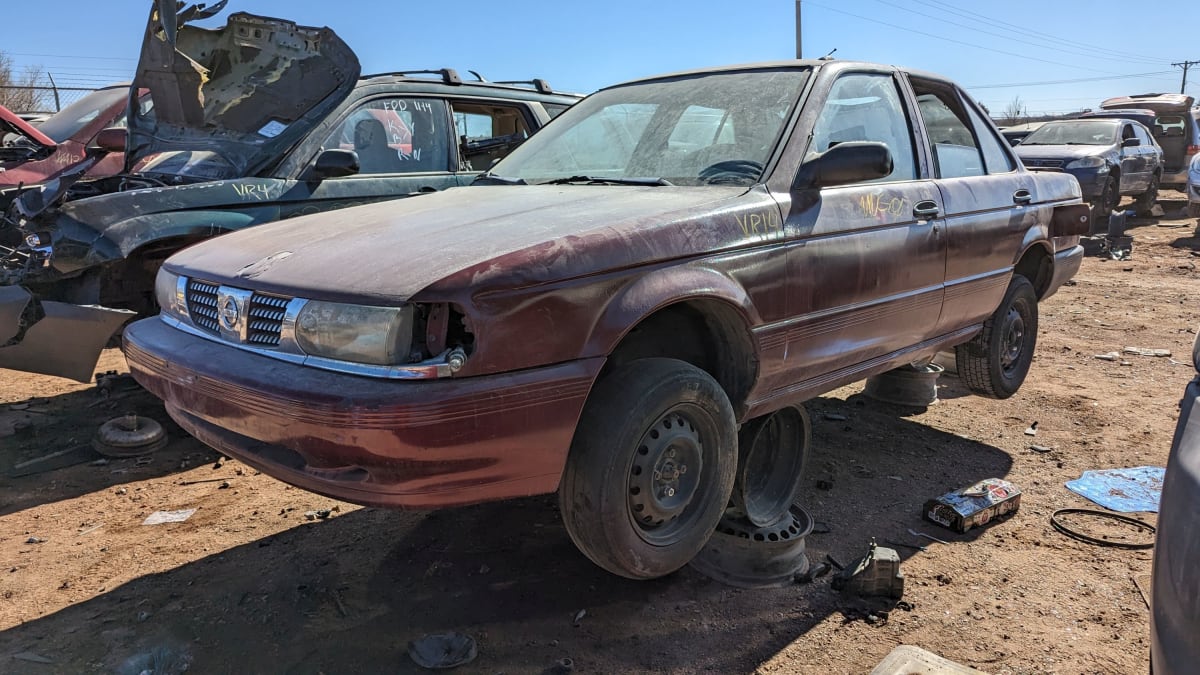
Cars with Mexican plates are surprisingly common sights in Colorado, and it’s legal to drive a Mexican (or Canadian) vehicle in the United States for a year after entering. After that year is up, getting American registration is basically impossible; you must either go back across the border and re-enter … or give up on the car and let the junkyard ecosystem claim it.
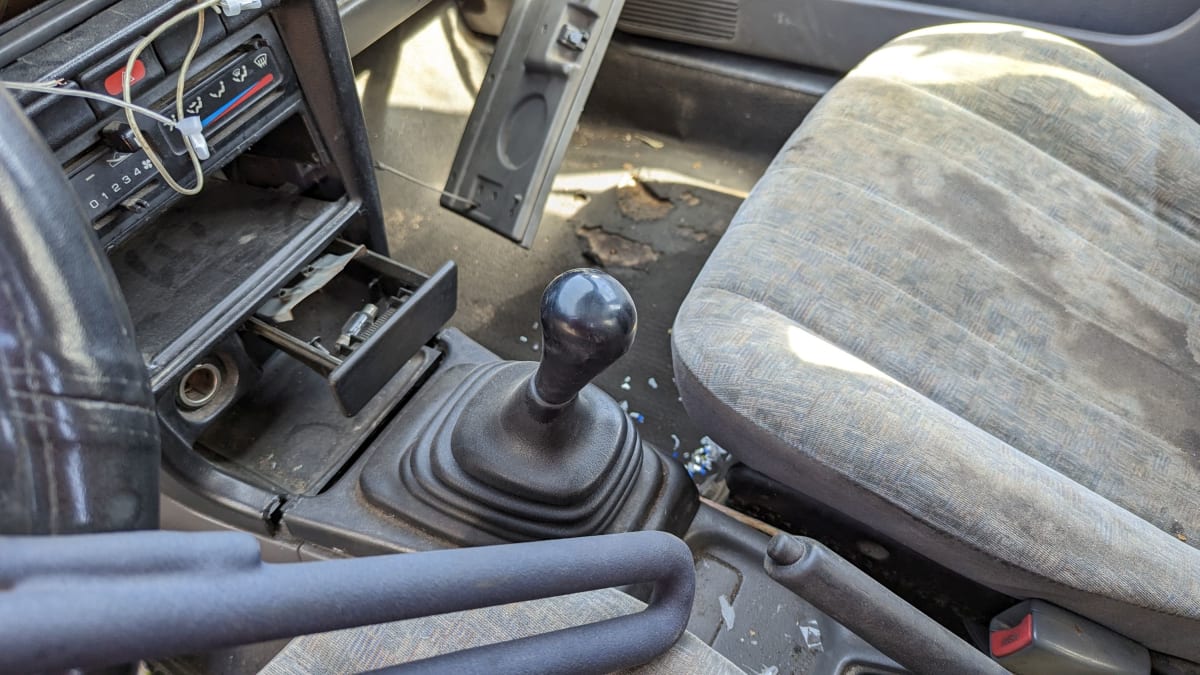
This isn’t the first Mexican-market car I’ve found in a Colorado boneyard. A couple of years back, I spotted a 2008 Nissan Aprio (a Brazilian-built Dacia Logan), and a 2009 Chevrolet Chevy (Mexican-built Opel Corsa) before that. From Canada, I’ve discovered a 2004 Acura EL (Honda Domani aka luxed-up Civic), a 1991 Honda Civic DX sedan and a 1985 Peugeot 505 Turbo.
¿Dónde está mi zapato?
Up in El Norte, it cost just $5 a day for 36 months to lease a new ’92 Sentra. That was highway robbery next to the prices Mexicans paid for later Tsurus.







